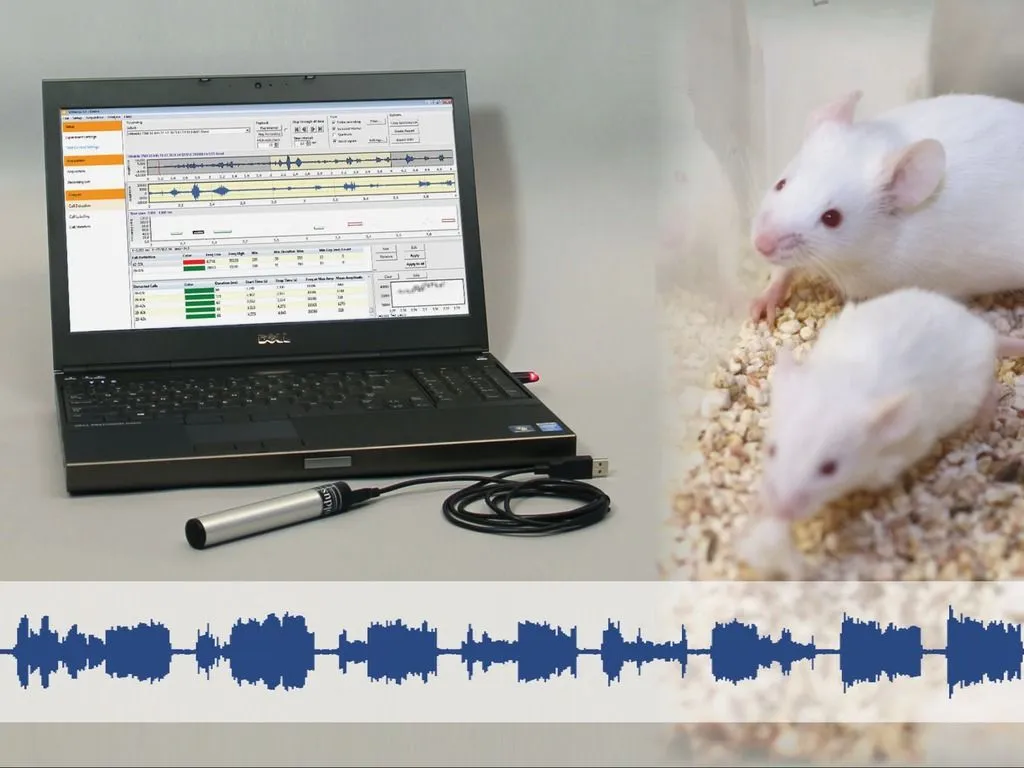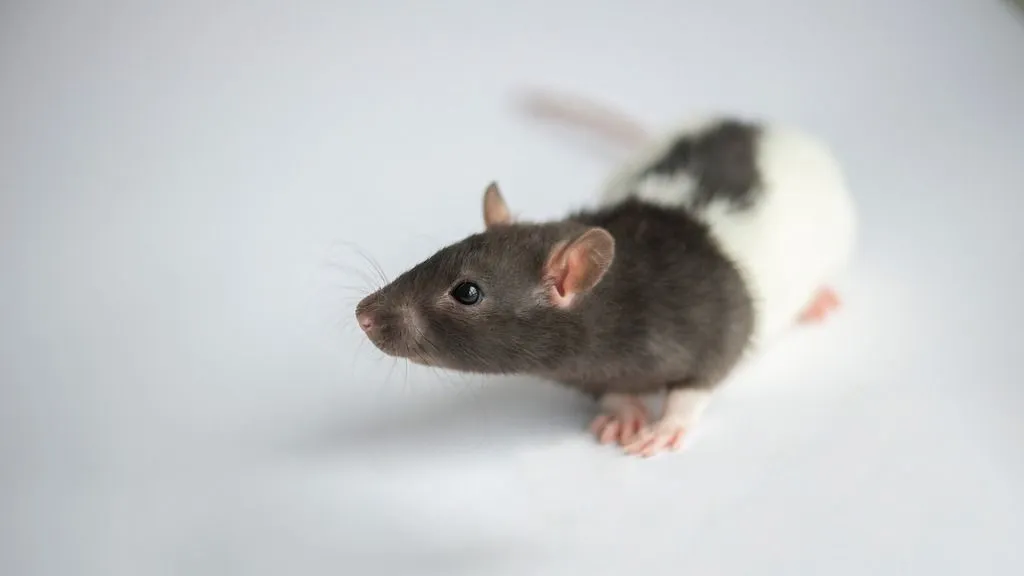Ultrasonic vocalizations
Even though animals might not be able to use language like we do,
there is much to gain from listening to the animals we test. Birds, rodents and other mammals
have a wide range of vocalizations that they are able to perform.
These vocalizations can give great insight into the behavior of these animals and offer a broader spectrum of analysis into the effect of potential interventions.

What are ultrasonic vocalizations?

Each species of animal has an unique range of vocalizations that it can produce. For some species the frequency of the sounds they produce lie outside of the hearing range of humans (20Hz-20kHz).
- Mice can vocalize up to 110kHz
- Rats calls can reach 80kHz
Furthermore, animals don't just make one sound, but have a variety of calls. These calls are a response to certain internal and external stimuli, and reveal a lot about the physical and mental state of an animal.
Why should I measure ultrasonic vocalizations?
Animal calls are indicative of their affective state. This means you can use the type of calls an animal makes as an indicator for welfare.
- Stress calls: Stress calls depend on the cause (isolation, alert, pain). Vocalization data can reveal stress responses that may not be captured by behavior or physiology alone.
- Postive calls: Some animals, like rats, make specific calls when having positive experiences, such as during play or being tickled. Vocalizations are an effective way to assess positive states in these species.
- Communication: Vocalizations play a key role in animal communication, especially during mating and mother-offspring interactions. Monitoring calls during social trials offers deeper insights into group dynamics.

How do you measure vocalizations
Spectograms
If you want to visualize the calls made by animals you can use a spectrogram. Spectograms display the frequency over time in a graph, making it possible to identify calls, as different calls show varying structures.
Number of calls
The number of calls represents how often an animal vocalizes during a given period. Counting the calls helps determine the level of vocal activity, revealing insights into social behavior, stress responses, or communication patterns.
Call duration
Call duration measures how long each vocalization lasts. This parameter is crucial for understanding communication, as different types of calls may vary in length, indicating specific behaviors or emotional states.
Dominant frequency
Dominant frequency refers to the frequency at which the most energy in a call is concentrated. It is a key feature in distinguishing between different types of calls, helping researchers identify specific species, individual animals, or even emotional states.
Mean amplitude
Mean amplitude indicates the average loudness of a call. This measurement helps assess the strength or intensity of vocalizations, which can be related to the animal’s size, physical state, or environmental influences.
Background noise
Background noise is any sound that isn't part of the vocalization but is present in the environment. Measuring and accounting for background noise ensures that vocal data remains clear and reliable, especially in noisy settings.
Featured blog posts
Sunshine and romance: ultraviolet light enhances sexual behavior
Ultraviolet B rays in sunshine enhances our romantic passion. How this actually works is still largely unknown. Research at the Tel Aviv University provides new insights.
How to analyze bird calls with UltraVox XT: a summer love on a spectrogram
UltraVox XT is used to study ultrasound vocalizations, especially in rodents and bats. But the fact that it analyzes full-spectrum sound, makes it ideal for analyzing bird calls.
Examples of animal behavior research
Researchers in ethology are interested in understanding all aspects of animal behavior. We have highlighted some great examples of Animal Behavior Research on our Behavioral Research Blog.
Are you looking for advice on your application?
Do you want to learn more about how to apply Noldus products to your
research, or do you need advice from our team of behavioral experts?
Noldus is here to assist you throughout the whole process.